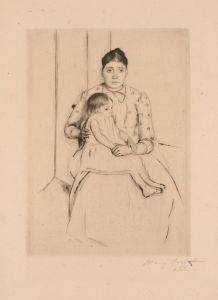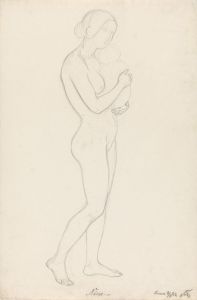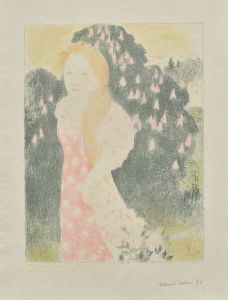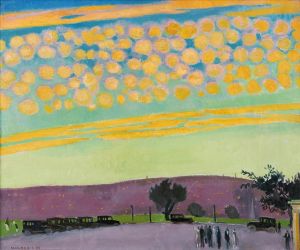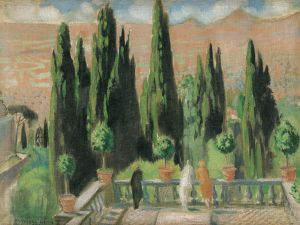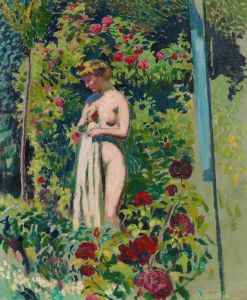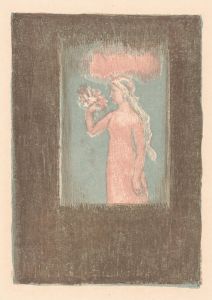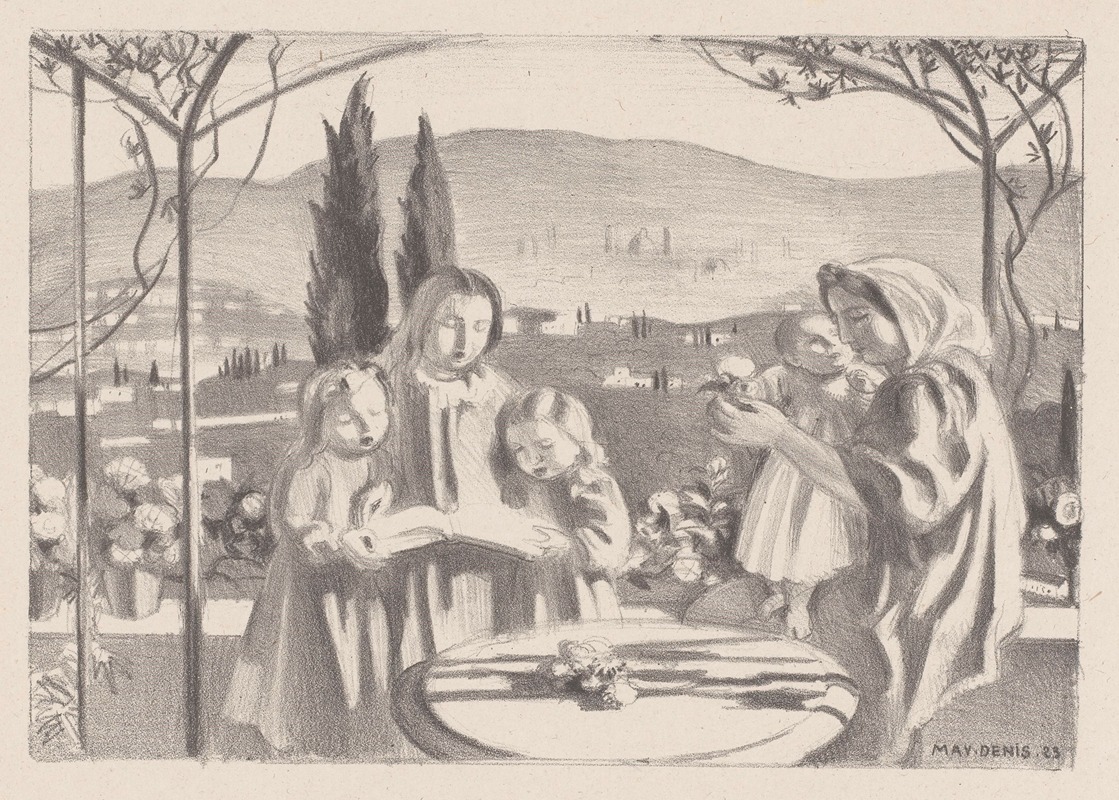
Italiaans landschap met moeder en kind en drie zingende meisjes
A hand-painted replica of Maurice Denis’s masterpiece Italiaans landschap met moeder en kind en drie zingende meisjes, meticulously crafted by professional artists to capture the true essence of the original. Each piece is created with museum-quality canvas and rare mineral pigments, carefully painted by experienced artists with delicate brushstrokes and rich, layered colors to perfectly recreate the texture of the original artwork. Unlike machine-printed reproductions, this hand-painted version brings the painting to life, infused with the artist’s emotions and skill in every stroke. Whether for personal collection or home decoration, it instantly elevates the artistic atmosphere of any space.
Maurice Denis (1870–1943) was a French painter, decorative artist, and writer associated with the Symbolist and Nabi movements. Known for his emphasis on the spiritual and decorative aspects of art, Denis played a significant role in the transition from Impressionism to modern art. His works often featured religious themes, domestic scenes, and landscapes, characterized by simplified forms, harmonious colors, and a focus on the emotional and symbolic content of the subject matter.
The painting Italiaans landschap met moeder en kind en drie zingende meisjes (translated as Italian Landscape with Mother and Child and Three Singing Girls) is one of Denis's works that reflects his interest in combining idyllic landscapes with intimate human interactions. The title suggests an Italian setting, a theme Denis explored during his travels to Italy, where he was inspired by the classical art and serene landscapes of the region. The composition includes a mother and child, a recurring motif in Denis's oeuvre, symbolizing themes of maternity, family, and tenderness. The inclusion of three singing girls adds a lyrical and harmonious quality to the scene, aligning with Denis's belief in the synthesis of visual art and music.
Denis's style in this painting likely reflects his characteristic approach of flattening forms and using decorative patterns, influenced by his admiration for early Renaissance art and Japanese prints. The work exemplifies his philosophy that a painting is "essentially a flat surface covered with colors assembled in a certain order," a statement that became a cornerstone of modern art theory.
While specific details about the creation date, current location, or provenance of Italiaans landschap met moeder en kind en drie zingende meisjes are not readily available, the painting fits within Denis's broader body of work that often celebrated the beauty of everyday life and the spiritual connection between humanity and nature. His art continues to be appreciated for its poetic qualities and its role in shaping the development of modern art.







